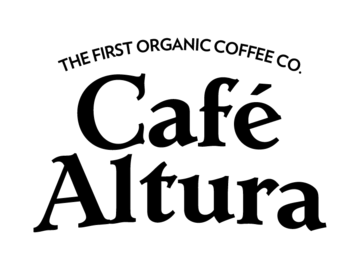
Ethiopia and the History of Coffee
The birthplace of coffee and home of its greatest biodiversity, Ethiopia is indispensably important in the history of coffee and in its consumption and sale in the modern day. This blog post will tell a small part of the story of coffee in Ethiopia, covering not only its origins in the forests of Kaffa, but also its enduring role in modern Ethiopian economics and culture, as well as its continued prominence in coffee consuming nations the world over.
Kaldi and the Dancing Goat
The most popular tale of coffee’s discovery by humans is centered around a shepherd named Kaldi, who is said to have lived in the western forests of Kaffa around 750 AD. The tale has many versions, but invariably centers on Kaldi’s observation that his goats behaved differently when they ate the fruit of a certain plant; they became enlivened, excited, and in more fanciful variations of the story, are even said to dance. Kaldi tried the fruit for himself and experienced similar invigorating effects. He shared the fruit with an Islamic monk, who, disapproving of the beans’ invigorating effect, threw them in a fire. A delicious aroma came out of the fire, and so Kaldi took the seeds of the fruit out of the flames and steeped them in water, making the world’s first cup of coffee. Regional variations on the story of Kaldi exist, such as the tale that coffee was not discovered by a herder or a monk, but an entire community which recognized the sweet smell of the plants after a fire burned up a part of the forest. When the community identified the plant which caused the sweet smell, they began to cultivate, roast, and drink its seeds. Whichever version of the tale you prefer, the fact of the matter is that coffee has been a crucial element of Ethiopia’s economic and cultural life for many centuries.
Coffee as a pillar of the Ethiopian economy
To focus on economics first, around 60% of Ethiopia’s income from foreign trade comes from coffee, and around 15 million of the country’s 100 million people depend on the coffee industry for their livelihood. Ethiopia also leads the continent of Africa in per capita coffee consumption, with around half of its coffee production staying on the domestic market. Ethiopia’s status as the birthplace of coffee also means that it is the site of coffee’s greatest biodiversity, with an estimated 95% of coffee’s genetic resources being found in the nation. The combination of this genetic diversity and the Ethiopian economy’s reliance on coffee as a major driving force in international trade means that research on and preservation of the nation’s many varieties of coffee is a top priority. For example, the Jimma Research Institute in southwestern Ethiopia is a laboratory and nursery which since the 1970s has striven to not only catalogue coffee varieties, but also breed disease and drought resistant plants with high yields to maximize returns for farmers. This approach shifted slightly in the 90s, as an increasing recognition of the unique regional flavor profiles of Ethiopian coffee led to the establishment of region-specific labs, which strive to preserve classic flavor profiles in addition to working towards more stable and economically viable varieties.

Coffee as an Ethiopian cultural heritage
Turning to culture, coffee is of great importance in the everyday life of Ethiopians. In the west, we know the traditional method of drinking coffee in Ethiopia as a “coffee ceremony”; coffee grounds are brought to a boil three separate times, enjoying each brew of decreasing intensity in the company of others, making coffee consumption a fundamentally community-oriented affair. In Ethiopia, however, the occurrence of such a ‘ceremony’ is so common as to not merit a formal term in Amharic, the official language of the nation; to Ethiopians, this communal gathering is simply how coffee is consumed. Regional variations on this practice exist, but the method of boiling and the presence of others in one’s community is ubiquitous, a logical consequence of the coterminous evolution of coffee and Ethiopian culture. Coffee is not merely the economic lifeblood of Ethiopia; it is a fact of life, deeply intertwined with the land and people of its birth.
Ethiopian coffee in the third wave
Since the emergence of so-called “third wave” coffee in the late nineties, quality focused coffee roasters and retailers have increasingly focused on the unique flavor characteristics of individual coffee origins, varieties, and farms. Many such factors have gone in and out of style, but for every shift in taste or public perception of coffee, Ethiopian coffee remains a staple. This is due to numerous factors, not least of which is the genetic diversity of coffee in Ethiopia discussed above; the incredible flavor uniqueness of Ethiopian coffee is a necessary consequence of the sheer variety of coffee plants growing in the nation. Ethiopian coffee is especially known for its bright, sweet, citric, and floral flavors, and it is these characteristics which make it a staple of modern coffee menus. Indeed, even in the off-season (just before new harvest arrives), all the “big three” craft coffee companies have an Ethiopian coffee on their menu. In this sense, then, the history of coffee in Ethiopia comes full circle; the birthplace of coffee also produces some of the most prominent and popular origin specific coffees a modern consumer comes across.
~ We currently offer 2 Ethiopian Coffees ~


Article By : Bret Colman, Director of Coffee / Head Roaster, Cafe Altura Organic Coffee
